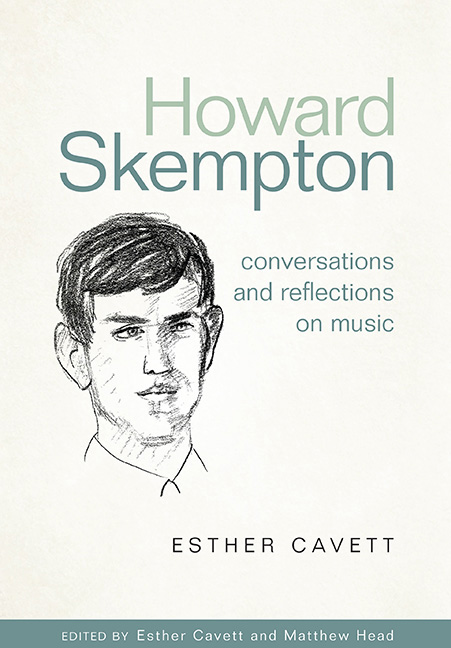Book contents
- Frontmatter
- Dedication
- Contents
- List of illustrations
- List of contributors
- Preface
- Roles and acknowledgements
- Introduction
- Editorial conventions
- Timeline
- Chapter One Histories
- Chapter Two Influences
- Conversation Two: The music from A Humming Song (1967) to Lento (1990)
- Reflection Two: Skempton and experimentalism
- Chapter Three Pattern and shape
- Interval: Previously unpublished manuscripts
- Chapter Four Influencing
- Chapter Six Narrative and closure
- Appendix One Authorized worklist
- Appendix Two Discography of first commercially distributed recordings
- Select bibliography
- Index
Conversation Two: The music from A Humming Song (1967) to Lento (1990)
from Chapter Two - Influences
Published online by Cambridge University Press: 10 September 2019
- Frontmatter
- Dedication
- Contents
- List of illustrations
- List of contributors
- Preface
- Roles and acknowledgements
- Introduction
- Editorial conventions
- Timeline
- Chapter One Histories
- Chapter Two Influences
- Conversation Two: The music from A Humming Song (1967) to Lento (1990)
- Reflection Two: Skempton and experimentalism
- Chapter Three Pattern and shape
- Interval: Previously unpublished manuscripts
- Chapter Four Influencing
- Chapter Six Narrative and closure
- Appendix One Authorized worklist
- Appendix Two Discography of first commercially distributed recordings
- Select bibliography
- Index
Summary
EC: In our first conversation, we looked at your early biography, and how some of the influences at home and in your educational environment supported your aspiration to become a composer, so that by the time you were 16 you had decided you were a composer, and that that was what you wanted to do for the rest of your life. In this second conversation, we plan to look at your music roughly from when you started studying privately with Cornelius Cardew and spending time at the Royal Academy of Music, where he was teaching, to when you were starting to get commissions in the later 1980s, and obviously Lento (1990) was a major part of that. During this period, you wrote short pieces for solo instrument, first for piano and then accordion. As you started to get commissions, you got the opportunity to write a wider variety of pieces involving bigger instrumental forces. Without being too prescriptive, I thought Lento might be a kind of tipping point, making the period from A Humming Song (1967) to Lento a natural period to look at. Is that so?
HS: Yes, Lento was a bit of a watershed, though there are two or three pieces immediately before Lento which seem to be significant in my development.
EC: I was very struck by the point about A Humming Song in your interview with John Fallas. You said it was a prototype. That is a pretty extraordinary statement to make, isn't it? I would be interested to understand when you decided that. It must obviously have been in retrospect that you realized it was a prototype.
A HUMMING SONG (1967) AND ARCHITECTURE
HS: I think A Humming Song is my Opus 1. It is the earliest piece which is published. And when I wrote it I was interested in the almost classical virtues of it. I was interested in the use of chance, I was interested in sound, and in balance between the elements and the whole. It was prompted by a performance of a piece by [Morton] Feldman, called Piano Three Hands [1957]. That performance had been at Madingley Hall where I attended a course in Easter 1967, and I wrote A Humming Song immediately after that course, in April.
- Type
- Chapter
- Information
- Howard Skempton: Conversations and Reflections on Music , pp. 33 - 56Publisher: Boydell & BrewerPrint publication year: 2019



